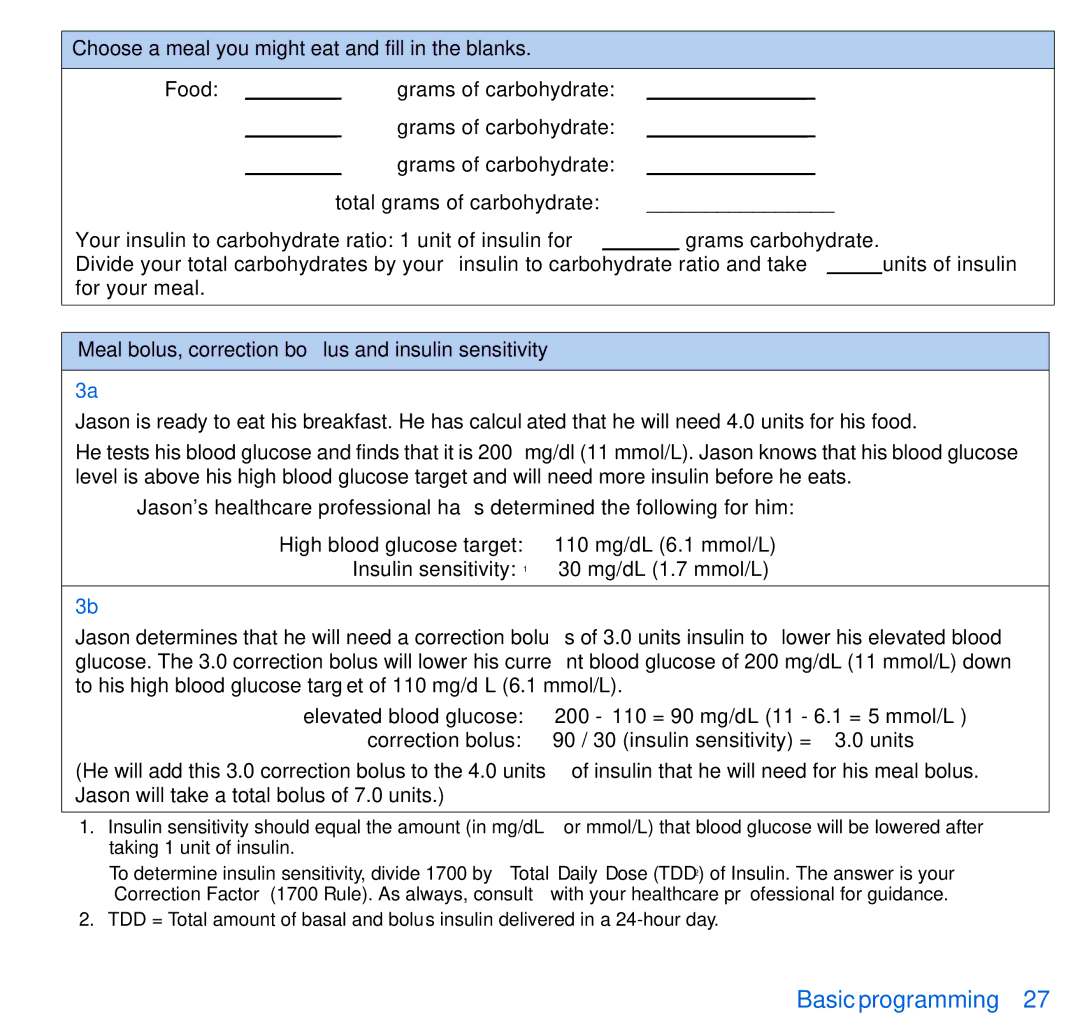
Choose a meal you might eat and fill in the blanks.
Food: ________ grams of carbohydrate: ______________
________ grams of carbohydrate: ______________
________ grams of carbohydrate: ______________
total grams of carbohydrate: ________________
Your insulin to carbohydrate ratio: 1 unit of insulin for _______ grams carbohydrate.
Divide your total carbohydrates by your insulin to carbohydrate ratio and take _____units of insulin
for your meal.
Meal bolus, correction bolus and insulin sensitivity
3a
Jason is ready to eat his breakfast. He has calculated that he will need 4.0 units for his food.
He tests his blood glucose and finds that it is 200 mg/dl (11 mmol/L). Jason knows that his blood glucose level is above his high blood glucose target and will need more insulin before he eats.
Jason's healthcare professional has determined the following for him:
High blood glucose target: 110 mg/dL (6.1 mmol/L)
Insulin sensitivity:1 30 mg/dL (1.7 mmol/L)
3b
Jason determines that he will need a correction bolus of 3.0 units insulin to lower his elevated blood glucose. The 3.0 correction bolus will lower his current blood glucose of 200 mg/dL (11 mmol/L) down to his high blood glucose target of 110 mg/dL (6.1 mmol/L).
elevated blood glucose: 200 - 110 = 90 mg/dL (11 - 6.1 = 5 mmol/L) correction bolus: 90 / 30 (insulin sensitivity) = 3.0 units
(He will add this 3.0 correction bolus to the 4.0 units of insulin that he will need for his meal bolus. Jason will take a total bolus of 7.0 units.)
1.Insulin sensitivity should equal the amount (in mg/dL or mmol/L) that blood glucose will be lowered after taking 1 unit of insulin.
To determine insulin sensitivity, divide 1700 by Total Daily Dose (TDD2) of Insulin. The answer is your “Correction Factor” (1700 Rule). As always, consult with your healthcare professional for guidance.
2.TDD = Total amount of basal and bolus insulin delivered in a
